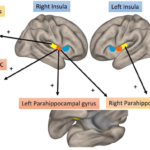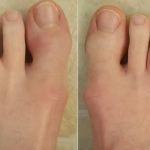Importantly, however, studies in monozygotic twins reveal a substantial proportion of discordance in both psoriasis (33%) and PsA (only 11%!), highlighting the influence that epigenetics and environmental factors can impose on disease development and perpetuation.6,7,8
Potential Triggers
Trauma & microbes offer some clues to PsA pathogenesis
The fact that non-genetic factors play a prominent role in the clinical manifestations of PsA is not surprising because previous research has revealed immune system variation to be determined by mostly non-heritable influences.9 The quest for understanding these environmental triggers and immunologic determinants of PsA development and perpetuation has been pursued.
One of the better studied instigators was first characterized by Heinrich Koebner (1876), who reported that mechanical trauma induced the development of new psoriatic lesions in nonlesional skin of patients with psoriasis.10 A deep Koebnerization phenomenon has also been extensively described for PsA.11 This mechano-inflammation hypothesis is supported by both the temporal association between injury and onset of the exaggerated inflammatory response, as well as the favored anatomical localization to structures exposed to micro- or macrotrauma, including the entheses and the joints. It can also justify the asymmetric, oligoarticular distribution of synovio-entheseal inflammation in PsA.12
One of the most intriguing potential triggers for psoriatic disease is the microbiome, the collection of symbiotic, commensal and pathogenic microorganisms (and their genomes) that reside in mammalian skin, mucosal surfaces and other organs. The adult human microbiome is for the most part robust and resilient. However, the perturbation of this equilibrium (i.e., dysbiosis) has been implicated in the initiation and perpetuation of several immune-mediated disorders, including psoriatic disease.13,14
In fact, studies in both animal models and humans have demonstrated a mechanistic link between the microbiome, gut inflammation and psoriatic disease. For example, multiple established murine models using mice that are prone to the development of psoriasiform rash and spondyloarthritis features do not demonstrate the phenotype under germ-free conditions but exhibit an interleukin 23 (IL-23)/IL-17-driven, spondyloarthritis-like inflammatory process when exposed to specific microbes, hence strengthening the hypothesis that intestinal dysbiosis is required to orchestrate synovioentheseal and cutaneous disease.15-17
In fact, multiple studies in humans have also demonstrated perturbations in the intestinal microbiota composition in psoriatic disease, as well as worsening pathology after fecal microbial transplantation.14,18-21 The prevailing hypothesis posits that this dysbiotic state leads to dysregulation of the gut epithelial barrier and the stimulation of IL-23-producing resident immune cells.22 IL-23-responsive mucosal innate cells are then activated with the capacity to circulate away from the gut and migrate to the enthesis and synovial tissues to cause inflammatory responses.23,24


